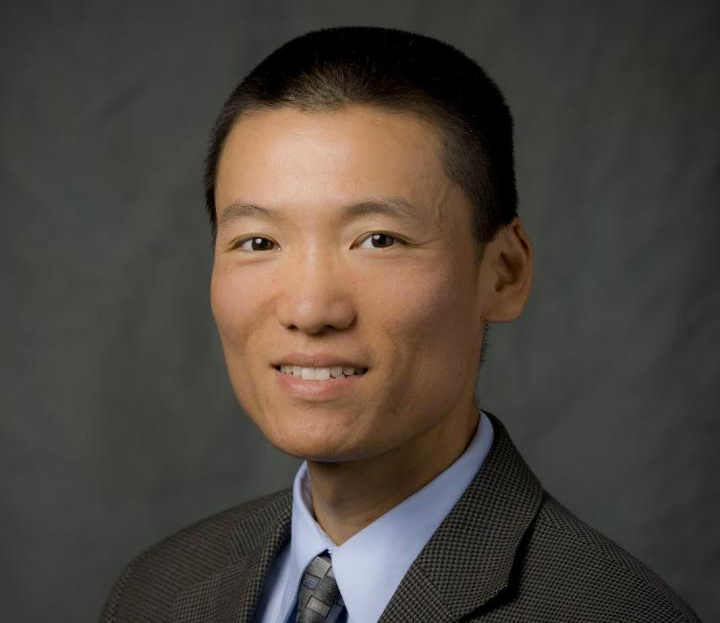
Click image to enlarge
"We're enriching the toolbox of CPS architects and engineers and making it possible for them to rigorously develop networked cyber physical systems with hard-real-time performance guarantees for applications in which every millisecond matters," says Dr. Liang Cheng, an associate professor of computer science and engineering at Lehigh University's P.C Rossin College of Engineering and Applied Science. Cheng, who is a member of the Leadership Council of Lehigh's new Institute for Cyber Physical Infrastructure and Energy (I-CPIE), was recently awarded nearly $500,000 in funding from the National Science Foundation's Cyber-Physical Systems (CPS) program.
A driver behind the wheel of a luxury sedan spills a cup of hot coffee and, in a moment of distraction, suddenly faces a life-shattering crash.
But in a split second--cue the dramatic pause--the vehicle's automatic breaking or crash avoidance technology engages the car's brakes. A time-critical intervention that avoids the tragedy altogether.
It's a made-for-TV scenario featuring technology that's becoming increasingly common as products and services rely more heavily on cyber physical systems, or CPS. These systems harness the power of sophisticated sensors, networks, and computations to control physical objects, infrastructure, and their interactions.
The more we depend on CPS in mission-critical applications with hard-real-time reliability and safety consequences (such as substation automation systems and networks that control aviation), the more important it is that the systems themselves are analyzed for reliability and performance both in the design phase and throughout their lifespan.
Yet because of the complexity and individuality of networked cyber physical systems--not to mention the disruptions caused by obtaining measurements while they are in operation, as is currently required--finding worst-case delays is a costly and time-consuming process. It's a problem that Dr. Liang Cheng, an associate professor of computer science and engineering at Lehigh University's P.C. Rossin College of Engineering and Applied Science is working to solve.
Cheng, who is a member of the Leadership Council of Lehigh's new Institute for Cyber Physical Infrastructure and Energy (I-CPIE), was recently awarded almost $500,000 by the National Science Foundation (NSF), through its Cyber-Physical Systems program, to establish a systematic approach to the design, characterization, and refinement of network infrastructure in CPS to find advances in designing and implementing CPS with time-critical tasks.
Cheng's project, entitled "CPS: Breakthrough: Analysis, Identification and Mitigation of Delay Performance Bottlenecks of Network Infrastructure in Cyber-Physical Systems," is reflective of I-CIPE's interdisciplinary focus on understanding, developing, and optimizing the cyber and physical components of infrastructure and energy systems that support all aspects of modern society.
Fixing a weak link in the advancement of CPS
"The problem of organically integrating CPS theories with network performance analyses remains largely unexplored due to the lack of a suitable framework for CPS network performance analyses," explains Cheng. "We propose to establish a measurement-driven analytical framework that derives the worst-case delays induced by network infrastructure of distributed CPS. The framework can be applied throughout the system's life cycle, which enables CPS architects to identify delay performance bottlenecks that result in latent safety threats at early stages."
A key hurdle, Cheng says, is the interdependency among information flows in CPS network infrastructure, an open research problem called worst-case delay analyses of information flows in non-feedforward CPS networks. Current state-of-the-art analytical methods can only obtain worst-case delay bounds when the information flow pattern is simple enough (known as feedforward traffic), i.e., information flows without interdependencies carried by the CPS network infrastructure.
"Deriving the worst-case delays for any flow of interest requires first analyzing 'interfering' flows that intersect it, which in turn demands the analyses of another set of 'interfering' flows including the flow of interest itself," Cheng says. "Based on our preliminary results, we believe that we are able to successfully decouple the interdependency and establish the needed framework, integrating measurement-based device modeling and network-calculus-based analysis."
From safer cars to a more reliable grid
The success of the project, Cheng says, would lead to CPS designs with "hard-real-time safety properties rigorously validated before system implementation, deployment, reconfiguration, and renovation, thus reducing the risks of hazards caused by irresponsive control."
For consumers, that translates to having more confidence that the embedded systems in our smart cars--our "smart" anything--will be safe and reliable.
For Cheng, providing more and better information to the architects and engineers developing and maintaining the CPS behind the automated industrial systems and control networks of our "smarter cities" has even wider implications.
Take the power grid, for instance: A utility company that wants to construct a new substation or renovate the automation system of an existing one could use the results of this research, he says, to help verify whether the substation CPS would meet the industry standard requirements in delay performance for hard real-time control.
Ensuring the substation's reliability would have ripple effects on the security of the entire power grid as well as on the critical systems in healthcare, transportation, and defense, among other applications, that depend on it in situations where every millisecond matters.
EurekAlert!, the online, global news service operated by AAAS, the science society: https://www.eurekalert.org/pub_releases/2018-12/lu-ms122618.php